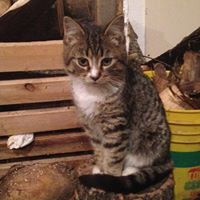What is a baby beaver called?
The basic units of beaver social organization are families consisting of an adult male and adult female in a monogamous pair and their kits and yearlings. Beaver families can have as many as ten members in addition to the monogamous pair. Groups this size or close to this size build more lodges to live in while smaller families usually need only one. However, large families in the Northern Hemisphere have been recorded living in one lodge. Beaver pairs mate for life; however, if a beaver's mate dies, it will partner with another one.
In addition to being monogamous, both the male and female take part in raising offspring. They also both mark and defend the territory and build and repair the dam and lodge. When young are born, they spend their first month in the lodge and their mother is the primary caretaker while their father maintains the territory. In the time after they leave the lodge for the first time, yearlings will help their parents build food caches in the fall and repair dams and lodges. Still, adults do the majority of the work and young beavers help their parents for reasons based on natural selection rather than kin selection. They are dependent on them for food and for learning life skills. Young beavers spend most of their time playing but also copy their parents' behavior.
More Info:
en.m.wikipedia.org







